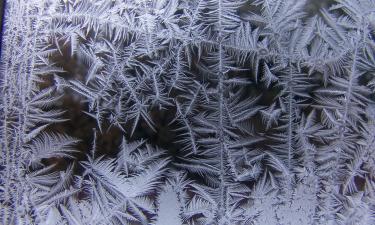The Missed Story of the Millennium: The Red Planet Lives
 Life on Mars – Is the Truth being hidden?
Life on Mars – Is the Truth being hidden?
Since classical times, mankind has, in one form or another, postulated about whether life exists on Mars. Now that the Red Planet reaches its closest point to Earth in almost 60,000 years, it is the right time to tell a story as yet untold: that of the Frass Meteorite.
The Frass Meteorite has all the ingredients of a Conspiracy Theory story, including the mysterious and unexplainable death of the son of the man who discovered it, but at the same time, it bears the hallmarks of an astonishing truth which drives to the very essence of our collective existence and more astonishing still because the scientific establishment in the United States of America has systematically derided and ignored one glaring fact: the Frass Meteorite, from Mars, holds evidence that the Red Planet is, or was, alive.
Discovered in 1971 at the Frass Ranch in Texas, the Frass rock was tested and confirmed as a meteorite. K-Ar (Potassium-Argon) dating places it in time at 49 and 13 million years old, created in the same volcano at different stages. Elemental analysis shows that the meteorite could not have existed on Earth long before it was found, since exposure to water completely alters its composition.
Comparing the Frass meteorite with other samples from the Pathfinder project, it becomes clear that this type of rock is common on Mars, bearing identical characteristics. While there is nothing very unusual or unique about a fragment of rock landing on Earth from Mars, close examination of the Frass meteorite reveals zoophytes (life forms).
The relatively low gravity of Mars and its smaller atmospheric pressure renders the Red Planet liable to project material with escape velocity after impact by asteroids - and Mars' position near to the asteroid belt between itself and Jupiter makes it the easiest target for roaming space material. When Earth is closer to Mars, our planet's gravitational field is strong enough to attract the escape particles projected from Mars. NASA has estimated that every decade, 500 tons of Martian material reaches Earth.
The zoophytes in the Frass meteorite are fungus-like organisms and something that resembles a fly-type insect. The attempts to have the fragment tested have resulted in a number of reactions, which from falsification of results to the theft of samples, to the dismissal of the meteorite's discoverer (whose name is not revealed) from his job, meaning that he incurred extra difficulties in financing the websites he managed about his find.
Initial tests by scientists at the Geochron Laboratories in Cambridge, Massachusetts, proved promising at first but these were followed by a sudden stony wall of silence.
The scientific establishment in the United States of America has never investigated the zoophytes (although to anyone who has seen photographs of the Frass meteorite, their existence is startlingly obvious), neither have tests been made to confirm the point of origin. After all, 16 billion USD are being ploughed into NASA's space program to bring back some grams of Mars dust.
It is a pity that the Frass meteorite is not allowed to be the judge of where the truth lies over ignorance and lies and cover-ups, which reign in the billion-dollar, flat-earth, cloistered realm ruled over by bottom-line managers.
For more information, visit the site www.marslife.com
Subscribe to Pravda.Ru Telegram channel, Facebook, RSS!





